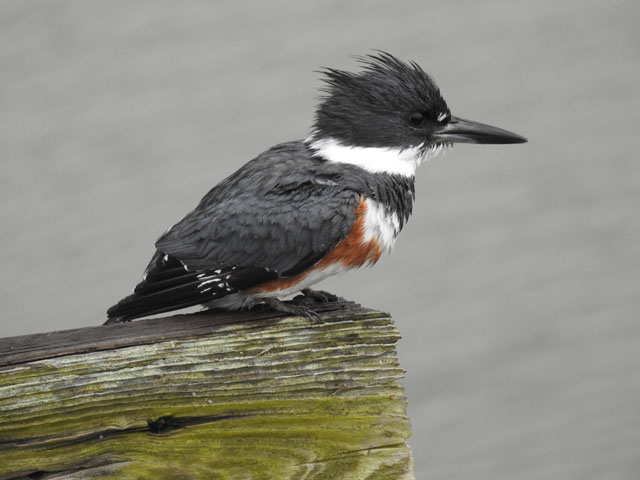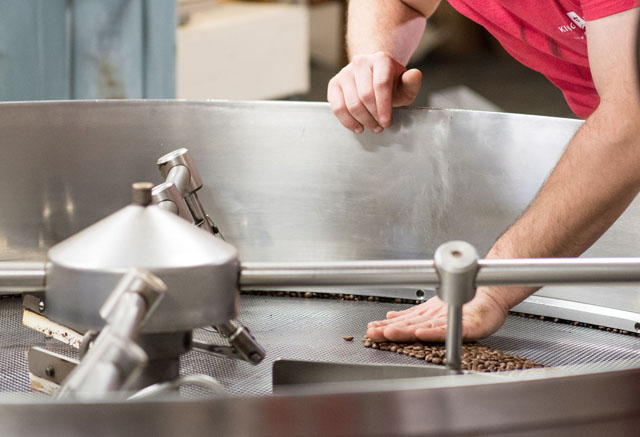Snow Birds
02 Nov 2023
Birding in the winter offers a new peek at our winged friends
By jenny Peterson
Photos by Charles Donnelly with Holy City Birding

There may not be snow exactly for “snowbirds” in the Lowcountry, but bird watching in the winter can still result in spotting some winged winter residents who only travel to South Carolina in the colder months.
Bird watching increased in popularity during the COVID pandemic as a safe outdoor activity and more and more people are discovering the charm of observing our winged friends. The hobby offers excitement in getting the chance to see a bird you’ve never seen before and a good excuse to slow down and take in the natural environment.
“Every season is an opportunity to view different bird species,” said Charles Donnelly, who owns Holy City Birding and leads groups throughout Charleston.
Birding in the spring sees warblers and wild turkeys; summer has wading birds and wood storks; fall has our famed pink Rosette spoonbills. Activity certainly doesn’t stop in the winter, as a plethora of ducks and sparrows that are exclusively winter residents in South Carolina arrive at nature preserves and marshy areas.
“In the winter, adding in the ducks really is the big difference. We do get a variety of gulls that we don't typically have during the summertime (ring-billed and herring gulls the most common, followed by great black-backed and Bonaparte's gulls.) But we also lose some of the tern species. Every habitat kind of just switches birds, which makes it fun and interesting,” Donnelly said.
The first thing to know about birding is that it’s a modest and observant activity; it requires stillness and observation where you use both your eyes and your ears. It’s quite a marvel to see different behavior patterns and behavior of bird species as they scour for food—coastal shorebirds like egrets and herons look for their breakfast (fish, bugs and insects) in the flats of the river so still they are like statues, and then moving with very deliberate, slow steps typical of wading birds that hunt on the edge of the water.
Other birds are more frantic, bobbing back and forth, beak-first, throwing all caution to the wind.
The latter—and a species that has already arrived for the winter—include small songbirds called a palm warbler.
“They like to forage on the ground and in lower vegetation. They have yellow coloring to them and a brown strip. If you go to a park and you see a little bird on the ground, it's probably going to be a palm warbler. They like to pump their tails, so they're easy to pick out due to that tail behavior,” said Donnelly.
Useful tools for birders around the world are top-of-the-line binoculars and a birding spotting scope. Donnelly’s scope is 35 times the magnification of human eyesight. Observing the birds through the scope brings these creatures inches from your eyes with intricate, high-definition details—feathers blowing in the wind and beady eyes darting back and forth.
Donnelly has been birding since 2015 and has jumped into the hobby wholeheartedly, even working with local schools to provide information about local birds to students. A real estate agent by day, he previously worked on a golf course and became enamored with the beauty of the outdoors.
He started Holy City Birding in 2022, offering group tours, writing a blog about birds and started a Bird Patch Club, where he creates unique patches of birds spotted on tours to mail to attendees. During his excursions, both with a group and solo, Donnelly enters the bird species and number of birds seen into EBird, an app on his phone that uses citizens as data scientists to help track bird species and inspires research on various species and habitats.
Yet, seeing and identifying birds is just one part of the entire experience. Fringe benefits include enjoying the outdoors and slowing down to take in the natural world.
Birding Around the Lowcountry
As a Mt. Pleasant resident, Donnelly’s favorite place to bird watch in the winter is the pedestrian bridge The Pitt Street Bridge near the Old Village.
“It's got such beautiful views and it's always active. All the seasons have different birds. Winter especially is a neat one there because you have the potential of seeing some wintering ducks or grebes, which is kind of like a duck. There are so many different birds you can see there and it's such an accessible place,” Donnelly said.
Another place that he enjoys is Fort Moultrie National Park on Sullivan’s Island and the Sullivan's Island Trail.
Going out with a birding guide is a great way to have an immediate bird dictionary and especially useful for those new to birding to learn about the species and their behavior and to get excited about birding.
The Charleston County Parks offers early morning bird walks at the Caw Caw Interpretive Center in Ravenel from 8:30 a.m. – 10 a.m. Wednesdays and Saturdays in November and December. (Learn more and sign up at www.ccprc.org.)
Donnelly said winter birding is great in dense forest areas like Caw Caw Interpretive Center in the winter as less leaves on trees make spotting birds—especially songbirds—a bit easier.
About 20 miles Southwest of Charleston, the ACE Basin National Wildlife Refuge has a stunning winter resident—the white pelican, Donnelley said.
While the brown pelican calls the Lowcountry home year-round, the white pelican in the winter can typically be spotted on the edges of Charleston in more remote areas.
“But, if you look up and you're in Charleston and your timing is right, you'll see them fly over. They're actually much larger than the brown pelicans,” Donnelly said.
Birding in your Backyard
You don’t have to travel far to see unique winter birds in the Lowcountry; just take a trip to your backyard. Using the right birdseed in bird feeders is a great way to bring these colorful animals to your back door.
“Our area can get a purple finch, which will come to people's feeders, but we don't always get them every year,” Donnelly explains. “They’re reliant on how good the food sources are further north of us and they're seed eaters, so if the food sources are not great, they'll head further south to try and find the food sources during the winter. There are certain winters where we get a bunch of them and they come to feeders and it’s always exciting to see a purple finch.”
Sunflower seeds are good bird attracters and a favorite of purple finches, although certain types of sparrows are not equipped to open the shell, Donnelly said. Shelled sunflower seeds or a mill feed like Nyger is the best for those species.
“And if we're really lucky, we get a bird that is here that maybe shouldn't be here or not typically here during the winter,” Donnelly said. “For instance, folks put out jelly feeders to attract orioles, which are a beautiful orangey bird that spends the winter here. Once in a while, the jelly feeder will attract something different. We’ve had people attract Western tanagers, which is clearly a Western bird. It’s exciting when a rare bird pops up.”
Types of Birds to See in Winter
Ducks deck the ponds in the winter in the Lowcountry. While wood ducks—the bright green and yellow swimming birds—are plentiful year-round, Charleston's winter visitors are Bafflehead ducks, blue-winged teals and dabbler ducks.
“They ‘dabble,’ so their tails are in the air and they're under the water looking for aquatic food. They’re typically more in the freshwater habitat and then we have sea ducks (like the black scoter), which will clearly be in the ocean. You can see ducks all throughout Charleston,” Donnelley said. “Almost all species of ducks that we have at the United States will visit us, with the exception of few that are solely on the West Coast.” Ducks are plentiful at the Santee Coastal Reserve (SCR) Wildlife Management Area in Mclellanville. “(The area) is growing aquatic plants that the ducks eat and they're making sure it’s the right level of water to attract the ducks,” Donnelley said. Wildlife management areas are the best bet for seeing the most variety of winter birds.
“You can go to a place like the Santee Coastal Reserve or Botany Bay Heritage Preserve and you could count a hundred different species of birds if you spend enough time there,” Donnelley said. “Winter is one of my favorite times to go birding because you can see so much variety. Charleston is full of great birding places. You can go birding almost anywhere and have success.”
For information on Caw Caw Interpretive Center bird walks, visit www.ccprc.com. For information about Holy City Birding, visit www.birdingcharleston.com.












